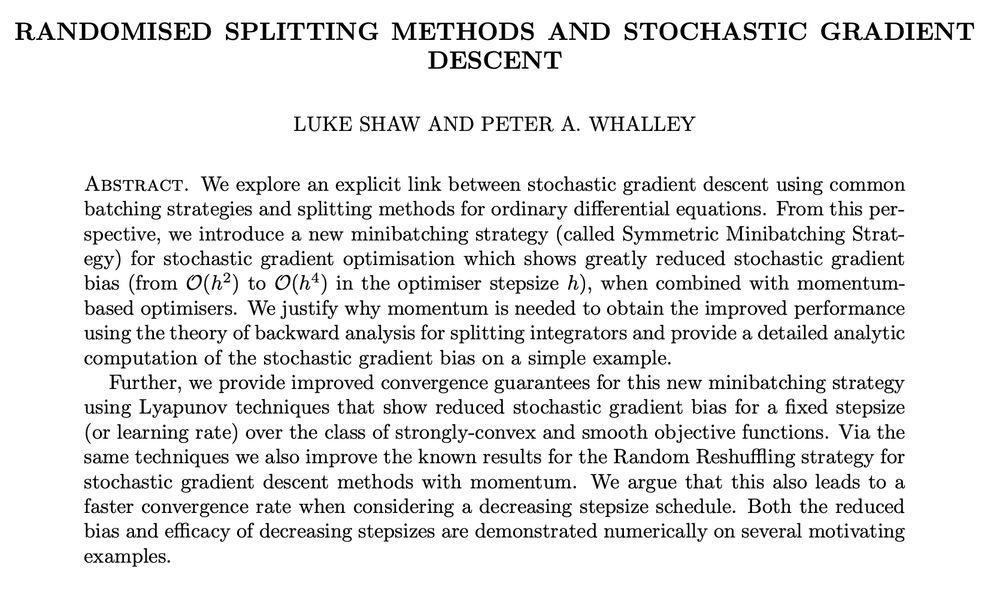
Meet the new Lattice Random Walk (LRW) discretisation for SDEs. It’s radically different from traditional methods like Euler-Maruyama (EM) in that each iteration can only move in discrete steps {-δₓ, 0, δₓ}.
Meet the new Lattice Random Walk (LRW) discretisation for SDEs. It’s radically different from traditional methods like Euler-Maruyama (EM) in that each iteration can only move in discrete steps {-δₓ, 0, δₓ}.

Normally we order our minibatches like
a, b, c, ...., [shuffle], new_a, new_b, new_c, ....
but instead, if we do
a, b, c, ...., [reverse], ...., c, b, a, [shuffle], new_a, new_b, ....
The RMSE of stochastic gradient descent reduces from O(h) to O(h²)
arxiv.org/abs/2504.04274

Normally we order our minibatches like
a, b, c, ...., [shuffle], new_a, new_b, new_c, ....
but instead, if we do
a, b, c, ...., [reverse], ...., c, b, a, [shuffle], new_a, new_b, ....
The RMSE of stochastic gradient descent reduces from O(h) to O(h²)
arxiv.org/abs/2504.04274
But I found this super confusing, it’s not an A=B+A statement

But I found this super confusing, it’s not an A=B+A statement


